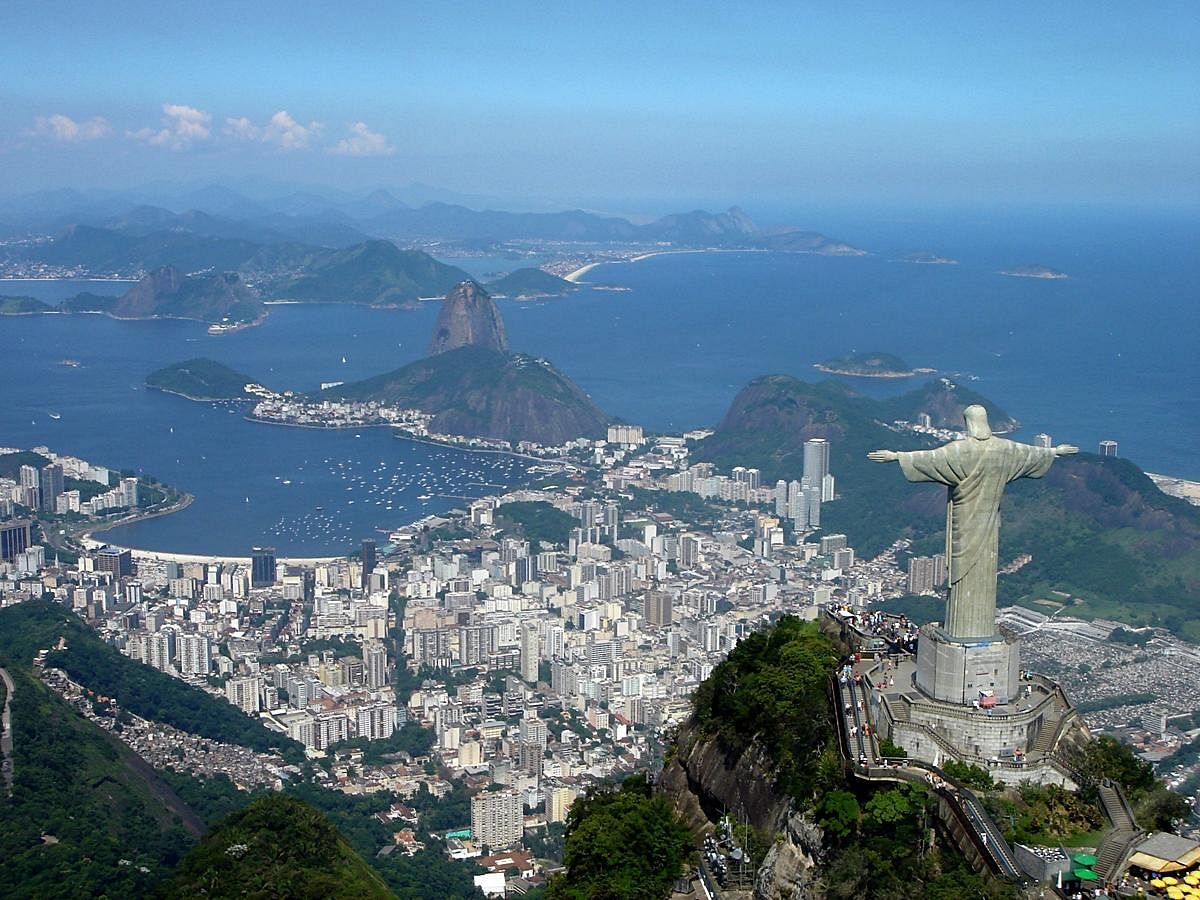
Let the words of my mouth, and the meditation of my heart, be acceptable in thy sight, O LORD, my strength, and my redeemer. (Psalm 19:14)
After the events of last year, humanity is undeniably seeking redemption — looking for quick restoration to normalcy and healing. This brought me to reminisce about the visit to the statue of Cristo Redentor (Brazilian Portuguese) or Christ the Redeemer located in Brazil’s most happening city Rio de Janeiro. Having seen its picture many times certainly didn’t deter my excitement in seeing the statue in person.
Our guide, Leonardo, a Brazilian of Italian descent, picked us from our hotel that was located right in the centre of the famed Ipanema and Copacabana beaches. From there we made our way to the base of the Corcovado mountain, our very first stop in the morning to see the famed statue which had made it to the 7 New Wonders of the World in 2007.
Corcovado means ‘Hunchback’ in Brazilian Portuguese because of the shape of the peak. It is a 710 metres granite peak in the Tijuca Forest which is also a National Park. Leonardo suggested that we go by the cog-train to the peak, which was a great decision as we meandered through the thick and verdant Tijuca National Park, which is part of the Atlantic Forest. The cog-train drops you just short of the peak where a few flights of steps reaches you to the 98-feet (30 metres) statue of ‘Christ the Redeemer’, located atop an 8-metres pedestal.
The outstretched arm of Jesus Christ measures about 92-feet (28 metres). It was interesting to learn about the reason behind building this statue. After World War 1, some representatives of the Brazilian government felt that the country needed a symbol or an icon to strengthen its morale and faith. So, in 1920, it was decided that a statue of Jesus Christ be constructed on the Corcovado Mountain that would overlook the entire city of Rio de Janeiro and could also be spotted from many parts of the city. However, this idea was mooted way back in the 1850s by a local priest when he had requested Princess Isabel to fund the project. But the idea was dismissed when Brazil was declared a Republic in 1889.
The Brazilian engineer Heitor da Silva Costa, who took charge of the designing came up with various designs. It was decided to adopt the Art Deco-style as is seen today, with Jesus Christ stretching out his arms wide as if to welcome all with his open arms. The face was designed separately by the Romanian artist Gheorghe Leonida.
The execution of the Art Deco statue can be credited to Paul Landowski (a French-Polish sculptor) who spent several years designing the statue into clay pieces, which were later shipped to Brazil and remade with concrete. It took nine years, from 1922 to 1931 for the completion of the statue and cost an equivalent of US $250,000 at that time. No wonder then that the statue weighs close to 635 tons. One wondered how the statue managed to reach the top of the Corcovado peak which is nearly 700 metres above sea level. We were told that because of the statue’s massive size, the necessary materials and the workers were transported up the mountain on a small cog-wheel train and it was put together on top of Mount Corcovado. Indeed, it was quite a task for any time in history.
There is a small chapel under the statue that was consecrated in 2006 to Our Lady of Aparecida — the patron saint of Brazil, on the 75th anniversary of the completion of Cristo Redentor, allowing Catholics to hold baptism as well as weddings on the peak. Other than the statue itself, the view from the Corcovado peak is stunning from every angle.
We spot the Sugar Loaf mountain — another well-known landmark of Rio de Janeiro; the Copa Cabana and the Ipanema beaches; the Maracana football stadium and some favelas. Last year, though the site was temporarily closed for tourists, it reopened in mid-August with additional safety guidelines. Christ the Redeemer continued to be a religious sanctuary for Rio even during the peak of the pandemic when vigils were held honouring healthcare workers and victims of the pandemic and giving comfort to the citizens of Rio.